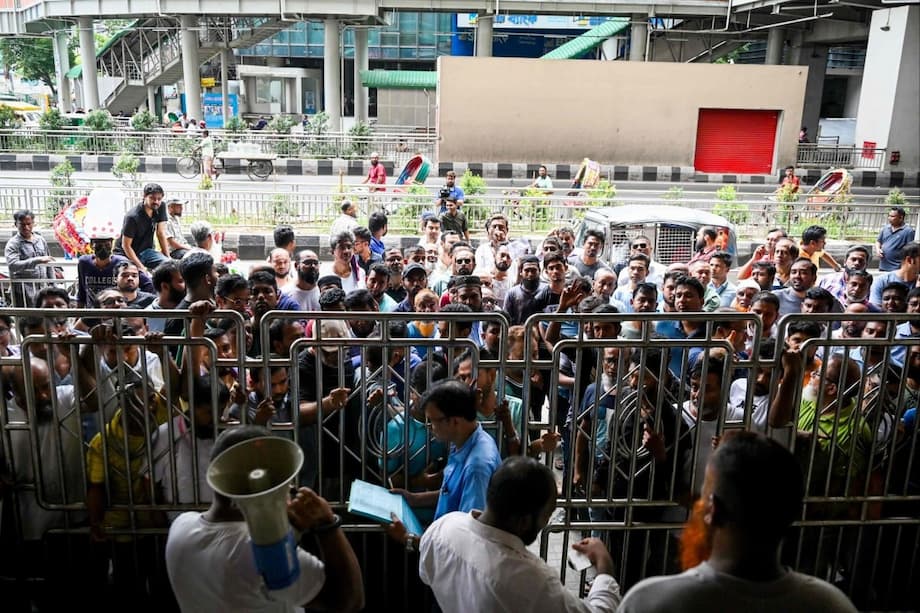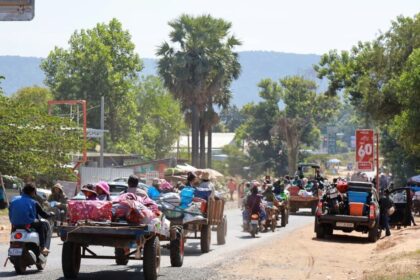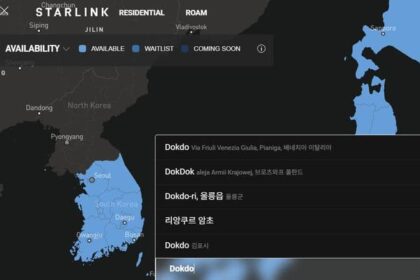Why Bangladesh is turning to imported electricity
Bangladesh is buying more power from India and running more fuel oil power plants to keep up with a jump in demand. Constraints on domestic gas supply and maintenance outages at coal plants have cut into local generation. Government data for the seven months through July indicate that imports from India surged about 70 percent, with most of the extra supply coming from a large Adani Power plant in eastern India. The shift has helped the country limit outages during the hottest months and the irrigation season.
- Why Bangladesh is turning to imported electricity
- How much power is Bangladesh importing from India
- What is happening with gas, coal, and fuel oil at home
- Adani Power at the center of the cross border supply
- Seasonal spikes and the risk of blackouts
- Regional power trade takes shape
- What this means for prices, industry, and reliability
- Longer term options for Bangladesh
- Key Points
Natural gas supplied roughly two thirds of Bangladesh electricity in the decade to 2020. The mix has since tilted toward imported power and coal plants inside Bangladesh, driven by gas infrastructure constraints and efforts to contain costs. Adeeba Aziz Khan, a director at Summit Power, described the balancing act at the Asia Pacific Petroleum Conference in Singapore, noting that gas is needed for fertilizer while cheaper electricity can be sourced from elsewhere, including fuel oil.
Officials and analysts say two realities are shaping decisions this year, a shortfall of gas for power generation and bottlenecks on the grid. Many gas units cannot run at full output because of low pipeline pressure. Several coal units have been in maintenance, which limits dispatch options.
Zahirul Islam, a member of the Bangladesh Power Development Board in charge of production, said the seasonal spike around irrigation and summer adds strain on the system.
April and May are summer and irrigation seasons, making electricity supply a major challenge during this time.
He said imports are taken according to contract availability, and the country will ask for more when those terms and the system allow it.
How much power is Bangladesh importing from India
On recent days this spring, roughly 17 percent of electricity on Bangladesh grid has come from India. Over the first seven months of the year, the import share averaged about 15.4 percent, up from 9.5 percent a year earlier. The jump reflects sustained transfers from Adani Power’s plant in Jharkhand and steady flows through the existing interconnections at Bheramara and Tripura.
Current flows and capacity
Bangladesh can import as much as 2,560 megawatts from India under existing interconnectors, according to grid data. Around midday on a recent weekday in April, operators recorded about 1,303 megawatts from Adani, roughly 907 megawatts through the Bheramara high voltage direct current link, and around 42 megawatts from Tripura. During the evening peak, Adani output to Bangladesh rose to about 1,360 to 1,366 megawatts, with Bheramara at about 915 megawatts and a small rise from Tripura. Grid engineers say the Bheramara interface is rated at 1,000 megawatts, yet transfers rarely exceed about 960 megawatts because of operating constraints.
Share of imports in the mix
The rise in imports coincides with a pickup in demand since March. Analysts at the Institute for Energy Economics and Financial Analysis said imports and the use of fuel oil units increased as temperatures rose. Government data show the share of imports at 15.4 percent in the first seven months of the year, while daily peaks in April showed imports accounting for more than 17 percent of supply.
What is happening with gas, coal, and fuel oil at home
Gas remains the backbone of Bangladesh power plants, yet output from those units slipped this year. Even with a 24 percent rise in liquefied natural gas imports through July, gas generation fell by about 1.2 percent over the same period. The gas share in the mix fell to about 43.9 percent from 46.8 percent year on year, according to official data. Officials point to low pressure in segments of the gas network, which forces many turbines to run below their nameplate output. The knock on effect is broader, since factories and fertilizer plants also draw on the same gas system.
Gas supply constraints
LNG prices have been volatile since 2022, and spot cargoes can be costly for a country coping with a dollar shortage. Bangladesh has to juggle payments for LNG, pipeline gas, and other imported fuels while keeping retail tariffs acceptable. These tradeoffs have made grid imports attractive when contract prices are predictable and fuel supply risks are limited.
Coal maintenance and outages
Coal plants inside Bangladesh faced maintenance work this year, reducing available capacity at times. Outages and fuel logistics can limit coal dispatch, especially when deliveries slow or inventories need to be rebuilt. Domestic coal output in the power mix slipped to about 26.2 percent from 30.1 percent year on year, another reason the grid leaned harder on imports when demand spiked.
Fuel oil as a stopgap
Oil fired plants have picked up some of the slack. The share of electricity produced by fuel oil units increased to about 12.6 percent in the first seven months of the year, up from 11.9 percent a year earlier. These plants can start quickly and are located close to load centers, which helps during peak hours. Their fuel bills are higher and emissions are worse than gas or hydro, so planners treat them as a short term bridge.
Adani Power at the center of the cross border supply
The Godda plant in India’s Jharkhand state has become the single largest external source of electricity for Bangladesh. The plant was built to export power to Bangladesh under a long term contract and feeds directly into the border interconnection. During tight weeks this year, supply from Godda covered most of the import requirement.
Adeeba Aziz Khan of Summit Power said the near term choices reflect price and the need to allocate scarce gas to other uses.
There is a shortage of gas for electricity generation and evacuation problems.
She added that a resurgence in gas based generation is unlikely soon, given fuel supply issues and grid bottlenecks.
Unpaid bills and late fees
Payment frictions have added strain to the India power trade this year. Indian media reported in April that Bangladesh was behind on bills, and Bangladesh officials said the government moved to clear dues. A recent editorial in The Financial Express said Adani Power’s chief financial officer disclosed about 0.9 billion dollars of unpaid bills as of early May after a 1.2 billion dollar payment in November, with dues on track to reach about 1.3 billion dollars by June. The paper also cited a late payment charge of 2 percent per month, roughly 27 percent per year, which compounds quickly for a utility that relies on subsidies.
Cost per unit compared
The same editorial detailed big price gaps across suppliers. It said the Power Development Board paid an average of Tk 14.87 per kilowatt hour to Adani in 2023 to 2024, compared with Tk 8.07 to NVVN, Tk 10.42 to Sembcorp Energy, and Tk 9.28 to PTC India. A separate domestic benchmark, the coal plant at Matarbari, agreed to sell at Tk 8.45 per kilowatt hour. Bangladesh courts have ordered a review of the Adani contract terms. BPDB has been asked to reduce costs while maintaining supply to avoid a tariff shock for households and industry.
At the height of the payment dispute, press reports in Dhaka said Adani scaled back output from Godda by roughly half for a period, before deliveries recovered when payments resumed.
Seasonal spikes and the risk of blackouts
Bangladesh demand typically crests from mid April through June when temperatures are high and irrigation pumps run steadily. Grid operators estimated peak demand at about 16,000 to 16,500 megawatts in early summer, while available production hovered near 15,500 megawatts. To bridge that gap without widespread load shedding, the government leaned harder on imports and on quick starting oil units.
A senior official at the Power Development Board, speaking to trade media, described the logic behind the move.
To avoid blackouts they turned to Adani’s energy, which was available in large volumes.
Transmission constraints also shape decisions. When operators refer to evacuation problems, they mean the practical limits of moving megawatts from the plants that have fuel to the regions where demand is highest. The high voltage link at Bheramara usually runs close to the upper threshold, but it rarely delivers the full rated transfer for long stretches.
Regional power trade takes shape
Bangladesh is beginning to tap a wider neighborhood for electricity, often with India in the middle as a transit grid. On June 15, Nepal started exporting 40 megawatts to Bangladesh over India’s 400 kilovolt Muzaffarpur to Baharampur to Bheramara corridor. The sale will run for five months to November 15 at a price of 6.4 cents per kilowatt hour under a tripartite deal among the Nepal Electricity Authority, Bangladesh Power Development Board, and India’s NVVN.
Nepal’s energy minister cast the shipment as a first step in a new market for hydropower from the Himalayas.
Power exports have unlocked a 5,000 megawatt export market for the country.
India also trades power with Bhutan and imports seasonal surpluses from Nepal while sending electricity to Bangladesh and Myanmar. Officials in New Delhi have discussed a subsea link to Sri Lanka, which would widen the regional pool over time.
More hydropower on the table
Bangladesh has also signed a framework to import 1,000 megawatts of renewable power from India and a regular 40 megawatt stream from Nepal, all transiting India. These flows are small compared with Bangladesh peak demand, but they point toward a supply mix that includes more clean power bought from neighbors with strong hydro resources.
What this means for prices, industry, and reliability
Continued imports help keep factories running during crunch months. The ready made garment sector depends on steady power to meet orders. Many larger mills installed their own captive generators to cover frequent shortfalls on the grid, which pushes up costs and erodes competitiveness. Small and cottage industries have fewer options when load shedding returns.
Exchange rate stress complicates the picture. Bangladesh foreign reserves fell sharply in 2022 to 2024, which made it harder to pay for imported coal and gas. That has steered planners toward contract power imports that can be settled on clearer terms, and toward rationing domestic gas for fertilizer and industry. Subsidies shield households from the full cost of generation, yet the gap between utility costs and retail tariffs adds pressure to public finances.
Longer term options for Bangladesh
Several projects now in the pipeline can ease near term pressure if they arrive on time. The first unit of the Rooppur nuclear plant is scheduled to add 1,200 megawatts by late 2025. The ramp up of Matarbari and other coal units will add capacity as fuel supply improves. Grid reinforcements, especially more transfer capacity at the western interconnections, would help operators move power more efficiently when plants are available but far from load centers.
Energy planners say a cleaner mix is also within reach. The government has set a target for at least 50 percent of electricity to come from renewable sources by 2050, up from a small base today. That would require sustained imports of hydropower from India, Nepal, and Bhutan, plus more solar and wind at home. The LNG market is likely to stay volatile according to independent analysts, which argues for reducing exposure to spot imports over time. Contract structures for imported power can be reviewed to lower penalties and unit prices, while keeping supply security intact.
Key Points
- Imports from India rose about 70 percent in the seven months to July, with the import share up to roughly 15.4 percent from 9.5 percent.
- On some April days, about 17 percent of Bangladesh electricity came from India, with up to 1,366 megawatts from Adani and around 915 megawatts via Bheramara.
- Gas generation slipped despite a 24 percent rise in LNG imports, as pipeline pressure limited many units.
- Fuel oil units filled gaps, lifting their share to about 12.6 percent in the first seven months of the year.
- Adani supplies have been central, but disputes over unpaid bills and high late fees strained the relationship.
- Nepal began a 40 megawatt export to Bangladesh via India on June 15 under a five month deal at 6.4 cents per kilowatt hour.
- Industry relies on steady supply, with the garment sector sensitive to outages and rising fuel costs.
- New capacity from Rooppur nuclear and future hydropower imports could improve reliability and reduce costs if delivered on schedule.












